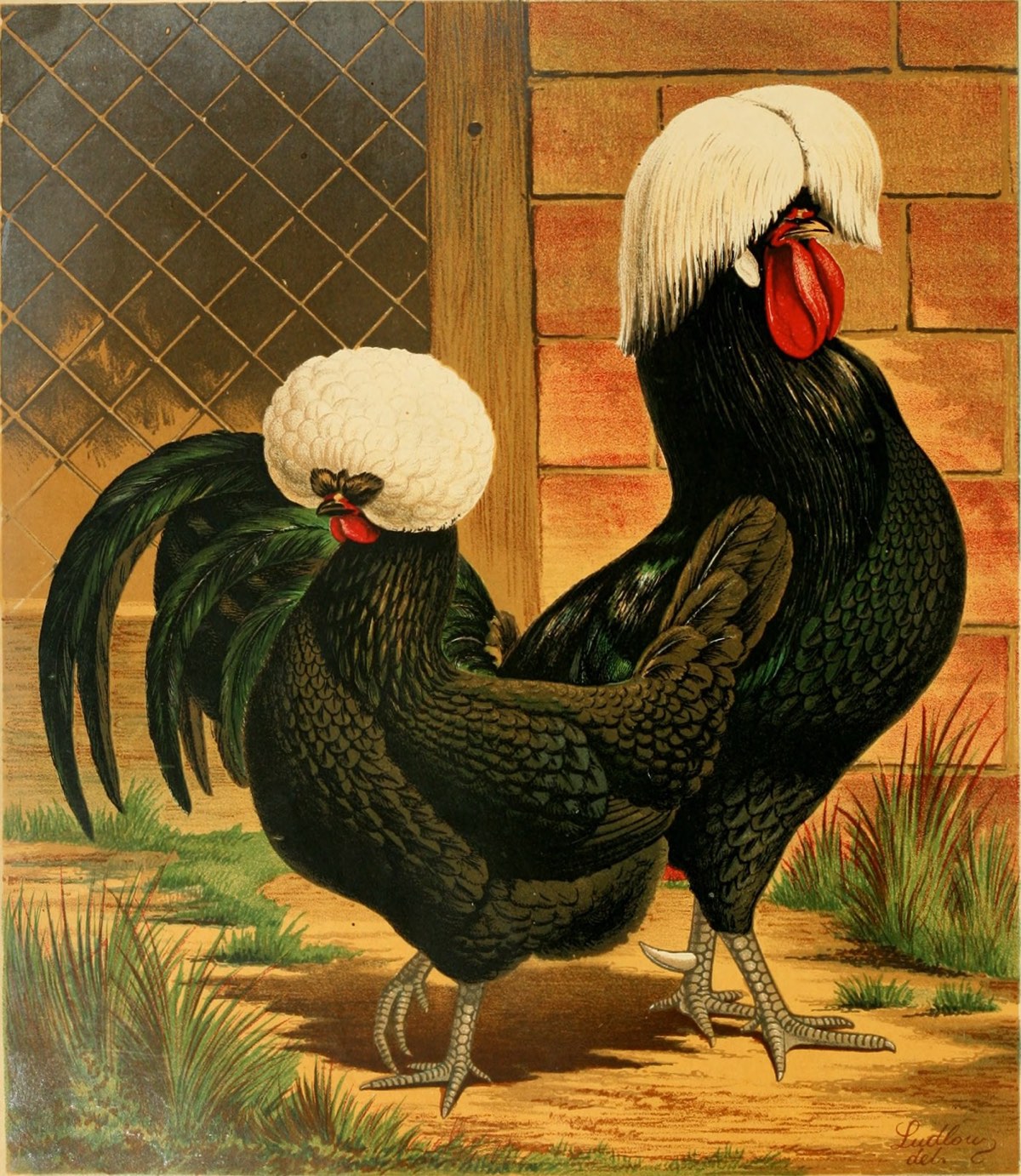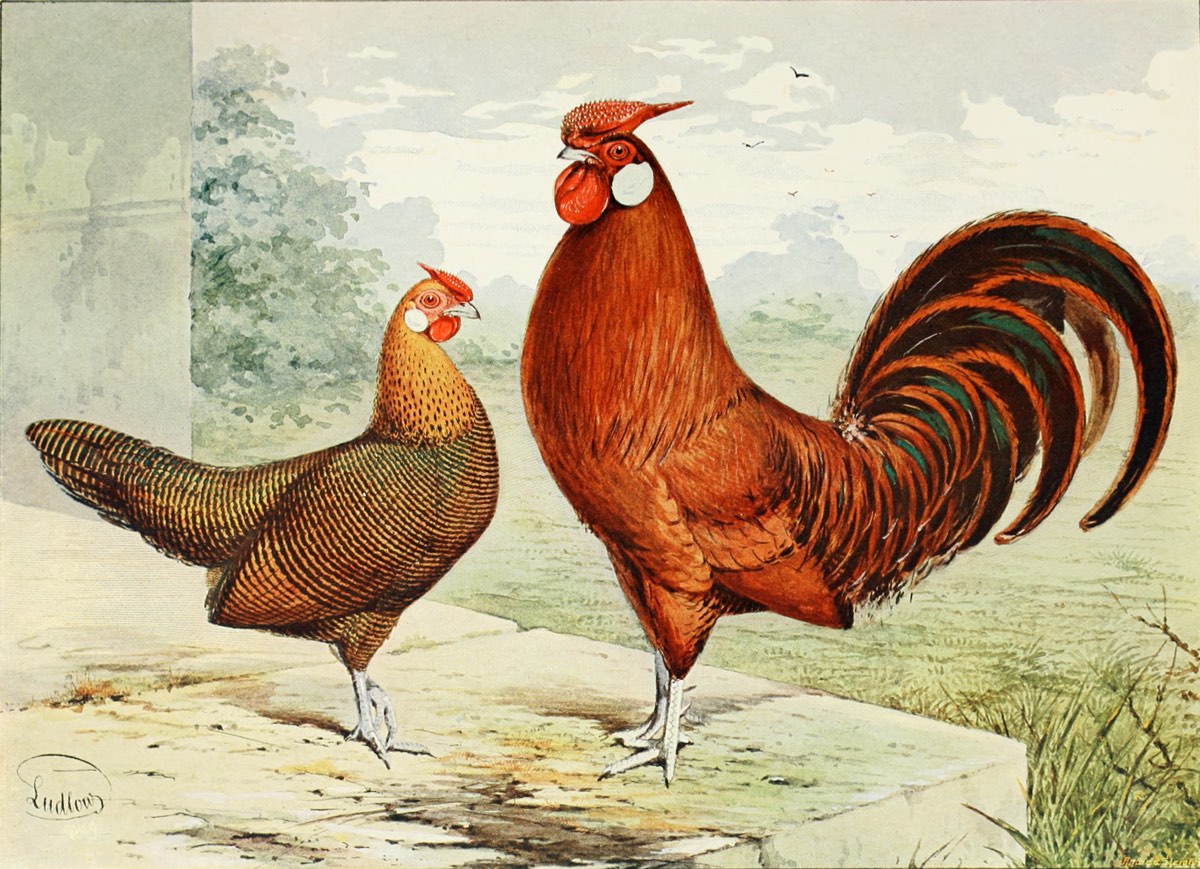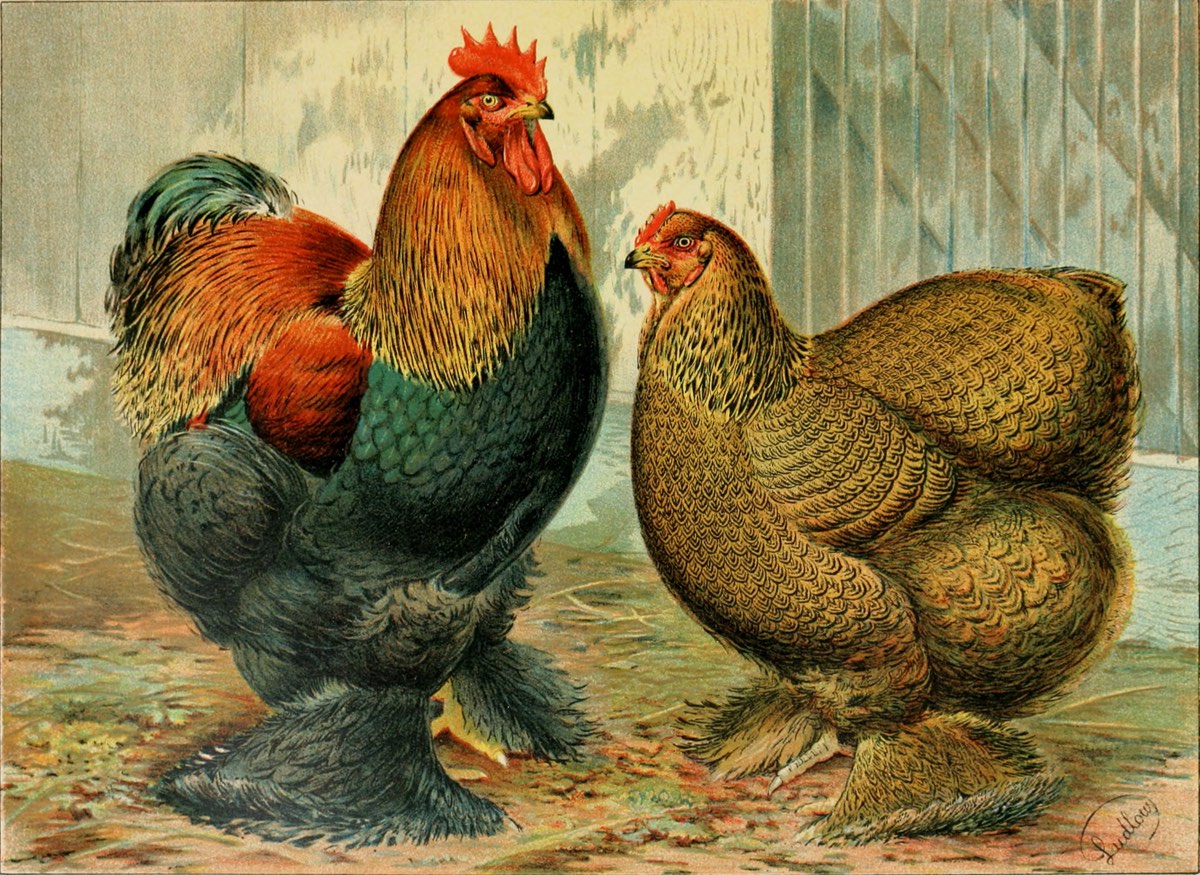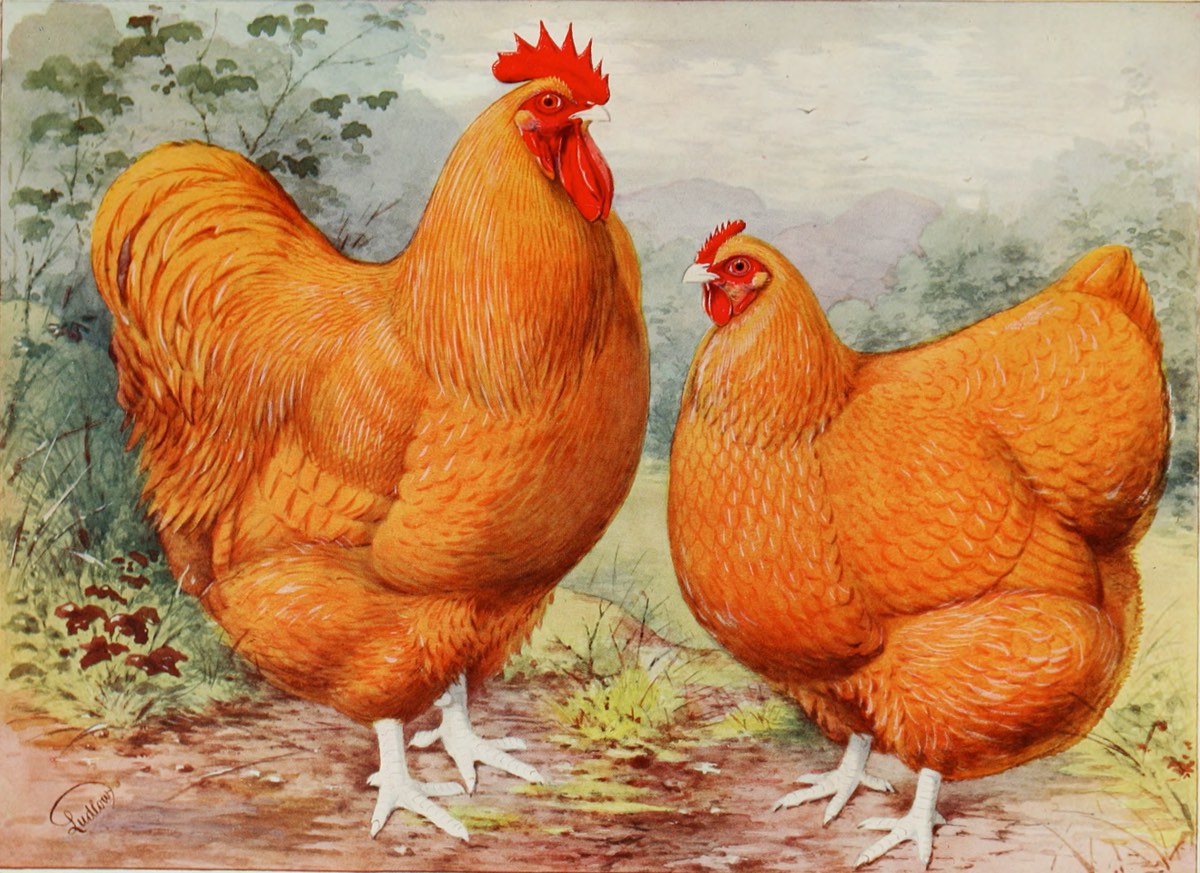Andrew Webber
Shared posts
Can you see a pattern forming here?
God hath given you one face, and you make yourselves a̵̧͏n̶͢o͠t͞h͝e̸͢r̶̛
The Secret Life of Dog
Andrew Webberi haven't watched but this seems like a good show
Nugs, Ranked
Retention Heterogeneity in New York City Schools
Populism and the Return of the "Paranoid Style": Some Evidence and a Simple Model of Demand for Incompetence as Insurance against Elite Betrayal -- by Rafael Di Tella, Julio J. Rotemberg
Tonight's Mystery has been cancelled.
Andrew Webbernooooooooooo
Biggy Pop
Free trade has been good for the poor
A study by Pablo Fajgelbaum of the University of California, Los Angeles, and Amit Khandelwal, of Columbia University, suggests that in an average country, people on high incomes would lose 28% of their purchasing power if borders were closed to trade. But the poorest 10% of consumers would lose 63% of their spending power, because they buy relatively more imported goods. The authors find a bias of trade in favour of poorer people in all 40 countries in their study, which included 13 developing countries. An in-depth study of European industry by Nicholas Bloom, of Stanford University, Mirko Draca of Warwick University and John Van Reenen of the LSE found that import competition from China led to a decline in jobs and made life harder for low-tech firms in affected industries. But it also forced surviving firms to become more innovative: R&D spending, patent creation and the use of information technology all increased, as did total factor productivity.
That is from The Economist. Here are versions of the paper.
The post Free trade has been good for the poor appeared first on Marginal REVOLUTION.
Hillary Clinton on Between Two Ferns
When you see how well it works for Donald Trump, do you ever think to yourself, “Oh, maybe I should be more racist”?
I loved this. If Galifianakis can’t get her to break, what hope does Trump have in the debates? Maybe this is part of her debate prep?
Tags: 2016 election Hillary Clinton politics video Zach GalifianakisSir Derek Jacoby vs Dame Helen Mirren was my undoing.
Locus of Control and Mothers' Return to Employment
Does Organizational Form Drive Competition? Evidence from Coffee Retailing -- by Brian Adams, Joshua Gans, Richard Hayes, Ryan Lampe
Andrew Webberin australia if you get coffee from a chain it is because you are a huge bogan with no taste (this is also how we view the american market)
Scientists discover giraffes are actually four separate species

Suddenly, there are four species of giraffe now. Previously there was only one. Scientists have analyzed the genetic code of hundreds of giraffes in Africa and found much variation in their DNA, enough to split one species into four.
Some of the differences were as large or larger than the differences between brown bears and polar bears.
Despite their similar appearances, members of the different species don’t appear to mate with each other. It’s amazing that scientists didn’t know this until now.
Tags: biology DNA genetics scienceIt’s now possible, in theory, to predict life success from a genetic test at birth
 By guest blogger Stuart Ritchie
By guest blogger Stuart Ritchie
For decades, we’ve known from twin studies that psychological traits like intelligence and personality are influenced by genes. That’s why identical twins (who share all their genes) are not just more physically similar to each other than non-identical twins (who share half their genes), but also more similar in terms of their psychological traits. But what twin studies can’t tell us is which particular genes are involved. Frustratingly, this has always left an ‘in’ for the incorrigible critics of twin studies: they’ve been able to say “you’re telling me these traits are genetic, but you can’t tell me any of the specific genes!” But not any more.
With a new method, “polygenic scoring”, behaviour geneticists can now look to see whether people have specific genetic variants or not, and based on this, make some impressively accurate predictions about how they will behave in the future. Particularly in the case of two new studies, this development also means researchers are getting themselves into a whole new set of controversies.
The method is relatively simple. Imagine you’d found in a study that smarter people are much more likely to have one particular version of a gene than people who are less intelligent. You could then, in an entirely new sample, see if people with this “intelligence gene” were doing any better than those without it. The polygenic scoring method is just this, writ large – instead of looking at whether people have one specific genetic variant that’s linked to a particular psychological measure, geneticists look across hundreds of thousands of points on the genome, totting up who has more of the genetic variants that make them susceptible to the trait in question.
Two new papers have applied this technique in the context of educational success – in this case, they built their polygenic scores on the basis of previous gene-hunting studies that had identified the specific gene variants found more often in people who stay in school for longer.
In the first paper in Psychological Science, with the not-at-all-provocative title “The Genetics of Success”, Daniel Belsky and colleagues aimed the education polygenic score at a whole host of life outcomes in the thousand-strong Dunedin Study, a cohort of New Zealanders who have been followed from birth up to age 38. The results are comprehensive, and pretty stunning.
 The children with more education-linked genes (that is, higher polygenic scores) learned to read faster. They did better on intelligence tests. They were more likely to go to university, and less likely to have financial problems. They were more likely to leave New Zealand to find job opportunities abroad, and more likely to choose a partner of higher social status. The idea is that the education-linked genes make people smarter, harder-working, and more socially successful—traits that help you lead a more “successful” life. Importantly, all this was predictable from a score that, in theory, could have been calculated on (or even before) the day the participants were born.
The children with more education-linked genes (that is, higher polygenic scores) learned to read faster. They did better on intelligence tests. They were more likely to go to university, and less likely to have financial problems. They were more likely to leave New Zealand to find job opportunities abroad, and more likely to choose a partner of higher social status. The idea is that the education-linked genes make people smarter, harder-working, and more socially successful—traits that help you lead a more “successful” life. Importantly, all this was predictable from a score that, in theory, could have been calculated on (or even before) the day the participants were born.
All of the above predictions were pretty weak though, in the sense that the polygenic score generally only explained one or two percent of the variance in each of the above traits and outcomes. This is where the second paper published in Molecular Psychiatry comes in. Using an even newer polygenic education estimate from a more recent gene-finding study (published in Nature this year), Saskia Selzam and colleagues found that their polygenic score explained a remarkable 9.1 per cent of the variance in age-16 GCSE results in a sample of 4,300 British teenagers. Because of this impressive effect size, Selzam and colleagues said their study “…represents a turning point in the social and behavioural sciences”. This is a little over the top: I see it more as an incremental (yet vital) step in a long march of studies that are changing the way we think about education.
The polygenic scores are already pretty good predictors: in Selzam’s study, they have just about half of the predictive value of asking about the parent’s socio-economic status, or testing the child’s IQ at age 7 (and the scores are based on DNA variants that are unchanged since birth and can be measured with a simple saliva or blood test). As we discover more about the genetics of education, the predictions will become more and more powerful. Then what? Do these studies usher in a new era of genetic testing to select children for different types of education? Not quite.
First, these results ‘explain variance’ at the group level, and we can’t easily translate this to individual prediction – yet. To do that, we’d need a representative reference panel with which to compare individuals, like the standardization samples used in IQ research. It’s only a matter of time before this becomes a reality for many traits. Second, as the authors of these new polygenic studies note, these results don’t necessarily have clear policy implications: some might argue that we should use the scores to predict who will do best in school and select them into higher-quality education; others may argue we should use the scores to identify those who are likely to struggle. Some will suggest both, some neither.
These varying interpretations – and the quickly advancing science – are why it’s crucial to begin a proper, fact-based debate about the potential uses of these genetic predictors. Is it acceptable to predict people’s educational attainment from a genetic score in practical settings, or should these methods only be used in research? Is it just like giving children an aptitude test, like the 11+, early in life, and if so do the same caveats apply? What if the long-term consequences of this genetic research involve screening and selecting embryos for higher polygenic education scores, as has previously been suggested? The only way to answer these thorny ethical questions is to understand the details and limitations of the genetic research: ignorance and denial are no longer an option.
—Predicting educational achievement from DNA

Post written by Stuart J. Ritchie for the BPS Research Digest. Stuart is a Research Fellow in the Centre for Cognitive Ageing and Cognitive Epidemiology at the University of Edinburgh. His new book, Intelligence: All That Matters, is available now. Follow him on Twitter: @StuartJRitchie
Good sentences about miniature donkey therapy meet-ups
A miniature donkey can change your life. Ten of them can change it a lot.
And:
Five years ago, Mr. Stiert was a software engineer at IBM. A bunch of things happened — divorce, a layoff, a sort of reckoning. Now, at 57, he says, “Every day is donkey day.”
And:
Ms. Hill, 26, said she kept returning because donkeys “don’t judge.”
“They understand, even though they don’t talk,” she said.
And the dreaded regulatory state raises its feared hand:
(Before you run out to shop for donkeys yourself, make sure they’re legal in your town. They are not in New York City, for instance, where the Health Code bans “all odd-toed ungulates” — hoofed animals — other than domesticated horses, “including, but not limited to, zebra, rhinoceros and tapir.”)
Those are not the only good sentences about miniature donkey therapy meet-ups, Andy Newman at the NYT has more. Here is a final winner:
For all their surprising virtues, donkeys can be a little stubborn.
The post Good sentences about miniature donkey therapy meet-ups appeared first on Marginal REVOLUTION.
Baltimore Tipped
Last year I wrote, In Baltimore Arrests are Down and Crime is Way Up. I worried that a crime wave occasioned in part by a work stoppage could tip into a much higher level of crime:
With luck, the crime wave will subside quickly, but the longer-term fear is that the increase in crime could push arrest and clearance rates down so far that the increase in crime becomes self-fulfilling. The higher crime rate itself generates the lower punishment that supports the higher crime rate…
In the presence of multiple equilibria, it’s possible that a temporary shift could push Baltimore into a permanently higher high-crime equilibrium. Once the high-crime equilibrium is entered, it may be very difficult to exit without a lot of resources that Baltimore doesn’t have.
Writing at FEE, Daniel Bier takes a long look at crime in Baltimore and the history of problems which got us to this point. He notes that the sharp drop in arrests which I discussed was indeed temporary.

But unfortunately:
Tabarrok’s fear that “a temporary shift could push Baltimore into a permanently higher high-crime equilibrium” looks to be borne out. Crime shot up due to temporary factors, but once those factors receded, the police [have] been unable to cope with the new status quo. Baltimore’s vicious crime cycle remains stuck in high gear.
…With 178 killings already in 2016, Baltimore is on track for 294 murders this year — shy of last year’s total of 344 homicides, but well above 2014’s total of 211.
To quote HBO’s The Wire, if Baltimore had New York’s population, it would be clocking nearly four thousand murders a year.
Daniel argues that Baltimore does have the resources to get back on track but at this stage in the game it may not have the will.
In one important respect, Baltimore is worse off than Ferguson, MO. Ferguson had poor policing but an average crime rate. Baltimore has poor policing and a sky high crime rate. Baltimore desperately needs more policing but the police have lost the trust of a vital part of the community and as the Department of Justice’s report on Baltimore brutally illustrates, in some cases rightly so. The DOJ report might provide the impetus for a surge–a large but temporary influx of federal funds for new hiring under a new police administration–that could reestablish a decent equilibrium and reform the department at the same time. Many, however, will decry a federal “takeover” of policing. Ironically, the law and order candidate might be more likely to impose Federal control, albeit it would be less likely to work.
Baltimore is truly stuck between a rock and a hard place.
The post Baltimore Tipped appeared first on Marginal REVOLUTION.
The heavy metal-ness of language
To determine which words are the most "metal", this data scientist wrote a program to sift through more than 22,000 albums to find the words most frequently used in heavy metal songs compared to their use in standard English. "Burn" is the most metal word, followed by "cries", "veins", "eternity", "breathe", and "beast". The least metal words?
particularly
indicated
secretary
committee
university
relatively
noted
approximately
chairman
employees
If you were to run an analysis on what I've written at kottke.org, I doubt it would be particularly metal. \m/
Tags: langauge musicThe Illustrated Book of Poultry





The Illustrated Book of Poultry by Lewis Wright, first published in 1870 and revised several times in the decades following, was “regarded as the most desirable of the English poultry books”. Poultry was very popular in Victorian England and the book housed a tremendous amount of practical poultry knowledge. From a Harvard Library blog post:
“Hen Fever”, as it became known during the Victorian Age, was an unprecedented obsession with owning, breeding, and showing the finest chickens in the world. The genesis of the poultry fancier owes much to Queen Victoria and her royal menagerie. In 1842, she acquired exotic chickens from China, and whatever the Queen did, the public would soon try to imitate and incorporate at home. The Illustrated London News reported “Her Majesty’s collection of fowls is very considerable, occupying half-a-dozen very extensive yards, several small fields, and numerous feeding-houses, laying-sheds, hospitals, winter courts, &c.”. From this point forward, poultry was no longer viewed as common farmyard critters, but valued and appreciated throughout the classes of Victorian Britain. The import and breeding of poultry was not just a leisurely hobby, but a profitable endeavor with sky rocketing price tags for the finest examples.
But the books also contained many wonderful illustrations of the finest examples of chickens and other poultry in the style of Audubon. The different breeds have amazing names like Buff Orpingtons, Plymouth Rocks, Dark Dorkingtons, and Gold Pencilled Hamburghs.
I pulled the images above from a 1911 edition of the book. (via @john_overholt)
Update: I removed a link to a reproduction of the book on Amazon because a reader reported that the quality was not great. (thx, alex)
Tags: art books illustration Lewis Wright The Illustrated Book of PoultryUsing Big Data to Estimate Consumer Surplus: The Case of Uber -- by Peter Cohen, Robert Hahn, Jonathan Hall, Steven Levitt, Robert Metcalfe
Andrew Webberthere was a reasonably interesting freakonomics about this: http://freakonomics.com/podcast/uber-economists-dream/
The Effects of Alcohol Use on Economic Decision Making
The hidden costs of nudging: Experimental evidence from reminders in fundraising
Impact of Sensory Quality and Labels on Consumer Preference of Fresh Strawberries
Andrew Webberjust buy the mexican strawberries
Dishonesty: From Parents to Children
Is Childcare Bad for the Mental Health of Grandparents? Evidence from SHARE
085 Jason Priestley - She Came in Through the Bathroom Window
Andrew Webberbig get!
Who better to discuss this episode of Beverly Hills 90210 than its director ... oh, and the series star Jason Priestley! His new film Zoom is in theaters now, and of course we’ve loved him since first seeing him onscreen as Brandon Walsh in 1990. Jason is also currently starring in the series Private Eyes and Raising Expectations, with Molly Ringwald.
You can still donate to our fundraising campaign for the Geena Davis Institute on Gender in Media, and Jewish Family Service of Los Angeles, for exciting rewards at gofundme.com/donnamartingrad
My personal tech ecosystem, updated
Andrew Webberoh, tyler
A few of you have asked, I considered that question in 2012, here is a significantly revised update:
1. Now I know how to text, sort of, though I hardly ever do it. It strikes me as the worst and most inefficient technology of communication ever invented (seriously). It’s not that fast, and it’s broken up into tiny bits of back and forth. I don’t see how it makes sense beyond the “What should I get at the supermarket? — Blueberries” level. There is intertemporal substitution, so just, at some other point in time, spend more time talking, writing longer letters, making love, whatever. Not texting. It is never the best thing to be doing, except to answer some very well-defined question.
2. I now carry only one iPad around, as I donated my spare iPad to a poor Mexican family. I use it very often for directions, book and restaurant reviews, and general life advice. Plus email and keeping current on my Twitter feed. I simply don’t want a screen any smaller than that. My iPad now also has a rather pronounced crack on the front glass, but that adds to its artistic value. I dare not drop it again.
3. I have an iPhone, which I hardly ever use for anything. Occasionally someone calls me on it, or I use it to check email in situations when it might be rude to pull out the iPad. Other times I am rude, but it’s actually a form of flattery if I am willing to check my iPad in front of you. You may not feel flattered, however.
3b. Except for the occasional Uber ride, I don”t use apps and hate reading news sites through the apps, I won’t do it. I’m used to the web, not your app, and I hope I can get away with being a stubborn grouch on this forever.
4. I now have a Bloomberg terminal, which is very cool. It is amazing that a product designed in the “before the internet as we know it” era still is the clear market leader and the best option. Bloomberg is a great company with a great product(s). Right now I can do about 5 of the 25,000 separate commands, but the fault is mine not theirs. In the meantime, send me email at my gmu address, not what is listed on the Bloomberg column.
5. I use my Kindle less over time. It remains in that nebulous “fine” category, but I prefer “real books.” Kindle is best for works of fiction when I know in advance I wish to read every page in the proper order. I am continuing with my long-range plan to read Calvin’s Institutes on my Kindle, bit by bit, in between other works. This will take me ten years, but a) he is a brilliant mind, and b) in the meantime I won’t lose sight of the plot line.
6. I have a new Lenovo laptop, sleek and fast, plus some computers at work. I don’t even know what they are, but probably they are quite subpar.
Way more iPad and way less texting are I suppose the main ways in which I deviate from the dominant status quo. Come join me in this and we shall conquer the world.
The post My personal tech ecosystem, updated appeared first on Marginal REVOLUTION.
The nature of upward Danish mobility
This link is now about two weeks old, but I’m on my way to Denmark and you’re going to get whatever I am thinking about, like it or not:
The first big idea is that Denmark is not a nation of Horatio Algersens. Its high social mobility is not the result of an economy that is uniquely good at helping poor children earn middle-class salaries. Instead, it is a country much like the U.S., where the children of poor parents who don’t go to college are also unlikely to attend college or earn a high wage. Social mobility in Denmark and the U.S. seem to be remarkably similar when looking exclusively at wages—that is, before including taxes and transfers.
It is only after accounting for Denmark’s high taxes on the rich and large transfers to the poor that its social mobility looks so much better than the U.S.’s. America’s (relatively conservative) economic philosophy is that, with low taxes and little regulation, the market is an open savannah where the most talent will win out. But Denmark’s economic philosophy seems to be that the market is an unfortunate socioeconomic lottery system, and so the country compensates the poor with generous transfers paid by high taxes on the rich.
The second big idea in the paper is that Denmark’s large investment in public education pays off in higher cognitive skills among low-income children, but not in higher-education mobility—i.e., the odds that a child of a non-college grad will go on to finish college.
That is from Derek Thompson. Here is his source:
…this Danish Dream is a “Scandinavian Fantasy,” according to a new paper by Rasmus Landersø at the Rockwool Foundation Research Unit in Copenhagen and James J. Heckman at the University of Chicago. Low-income Danish kids are not much more likely to earn a middle-class wage than their American counterparts. What’s more, the children of non-college graduates in Denmark are about as unlikely to attend college as their American counterparts.
Both the paper and the article are recommended.
The post The nature of upward Danish mobility appeared first on Marginal REVOLUTION.
